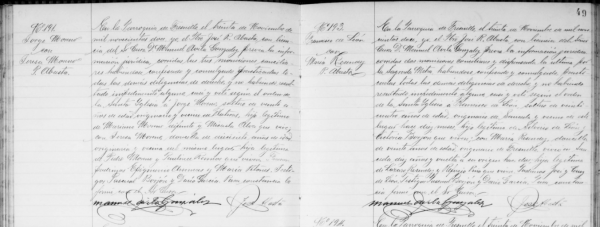Tips to Decipher Old Handwriting
While researching your family history, you may come across many old handwritten records that are hard to read. Although genealogists would love to see clear, easy-to-read penmanship, you’ll find that that is not always the case. From the census enumerator with the sloppy cursive to your ancestors’ flourished writings in old journals, handwritten documents can sometimes feel impossible to decipher.
Image: 1912 Catholic Church marriage record from Mexico
Time and patience are key to understanding exactly what is written on the page. Check out these five quick tips to make deciphering old handwriting a little bit easier:
1. Read through it
Read the document in its entirety a few times and make note of what words look familiar. This will help you get a feel of the person’s writing style.
2. Put it in your own handwriting
Transcribe the document yourself and leave blanks for any words you can’t make out. Once you’re done, read it over a few times and see if you can figure out the missing pieces.
3. Compare the text
Compare hard-to-make-out words to other words on the document for reference. See if any of the letters look the same. Getting a handle on some of the letters can help you fill in the bigger blanks.
4. Keep an eye on stylistic variations
Look out for stylistic variations in the lettering and grammar. In the 19th century, double s in words were often written with a long s, which often looked like an f or p.
5. Read in context
What kind of words or phrases would likely be found in that type of document? Reading the document in context can help you decipher some of the more difficult pieces.
Have you found some documents with hard-to-read handwriting? What tips do you have to share?








 Genealogy Discussions
Genealogy Discussions Genealogy Projects
Genealogy Projects Popular Genealogy Profiles
Popular Genealogy Profiles Surnames
Surnames The Geni Blog
The Geni Blog The World Family Tree
The World Family Tree